The sadest aspect of the Simmons company’s collapse is the end of research and great and innovative ideas in Electronic drums, mainly provided by Dave Simmons himself. Really the bitter end? No… My Simmons buddy Michael Buchner (not to forget a handful of other neirds on our planet) still studies, extends and develops this vintage gear in order to make or keep it contemporary and also working in today’s environments. So I am proud that he asked me to share his latest development results with you through my blog. So here is his report:
“The digital modules of the SDSV have no triangular oscillator, but a digital sound source. There is an EPROM containing a metallic waveform, a part of a recorded real cymbal.
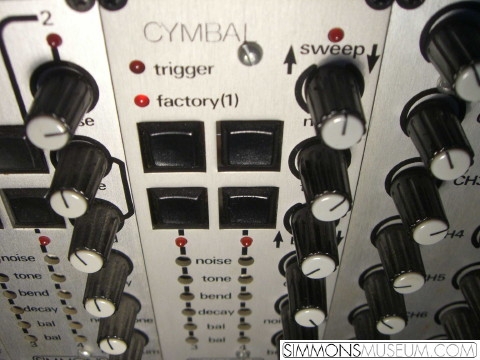
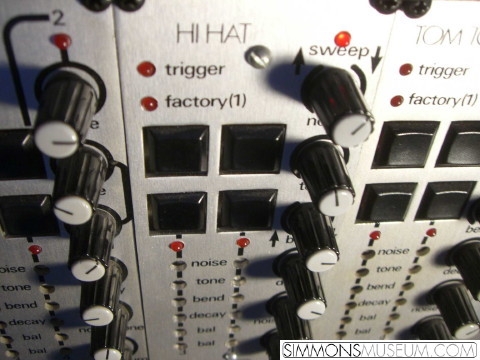
If this would be played one shot as usual, only a rather short sound would be heard. So Simmons looped the sound, but not one way: It is a real forward/backward loop.
The loop is played all the time inside the SDSVs digital modules; it is not started or stopped by envelopes, only gated out by VCF and VCA. So long decay settings are possible.
This is the original schematic:
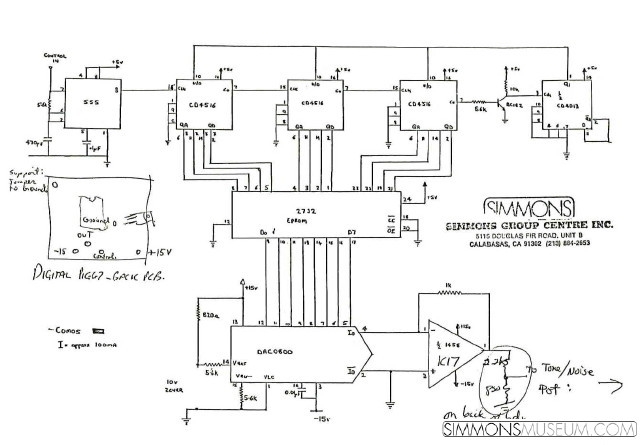
The 555 is working as a clock, the 4516 are the counters and the 4013 is changing the readout direction. Because there was no space on the regular PCB, Simmons made an extension called the auxillary or “piggyback” PCB (PCB = printed circuit board).
To be true, the metallic waveform has nothing to do with a real cymbal sound, you can hear its looping, everything is very raw, but:
This is a CULT sound! If you play this with bending up or down while toying around with noise and filter, you get these famous cymbal sweeps!
So here is a description to get this sound into another machine, the SDS7. You can convert any card for the V- Cymbal and the sound is very close to the original!
This is how it was done:
First I had to get the original data bit-by-bit. To read out the original wave data, a simple adaptor was necessary to get the 2732 EPROM into my 2764 reader, because the 2764 has four more legs and the supply voltage has to be connected to another pin of the 2732:
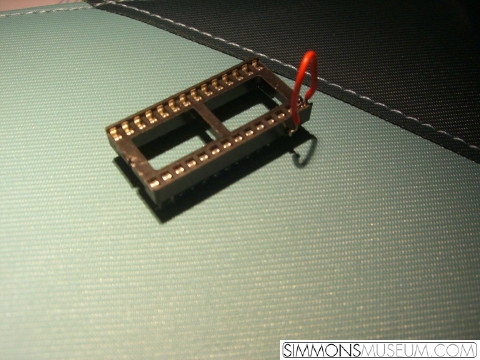
After the readout I had the sample twice in a row. I REVERSED the second half to have the forward/backward effect like in the original. Now I had the data to burn a 2764 EPROM.
I also made a file where this data was doubled by copying it another time for use in 27128 EPROMS.
One real important change has to be made on the SDS7 module (card): The decay kill diode has to be removed. Now the counter loops the EPROM all the time and decay times up to 5 seconds as on the SDSV are possible! Here the position of the diode to desolder or to cut off:
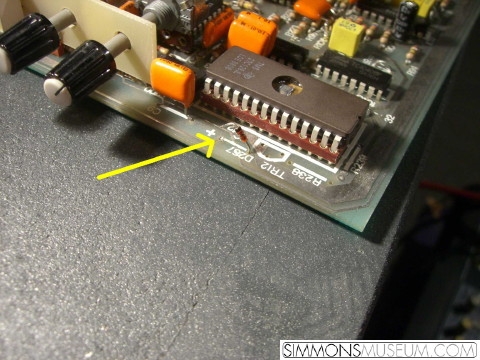
After all this, some cosmetics…
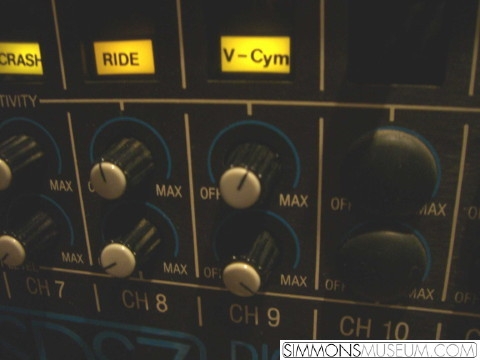
It sounds great! Finally: I have to check out some modifications to get a higher pitch setting (higher than the original) SDSV and a ultra long decay!”
And here is the (mp3 encoded) raw wave form, extracted by Michael from the original 8 bit eprom sitting on the SDSV HiHat card: click to listen